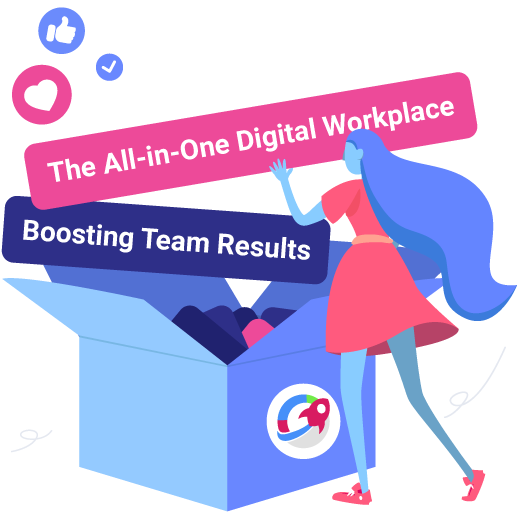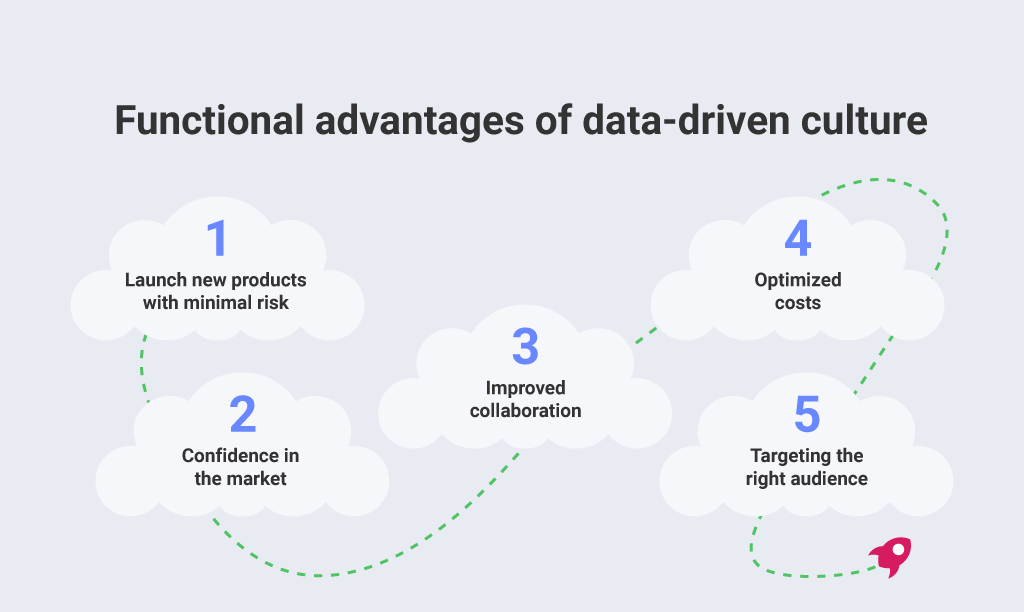
How Stephen Gould Scaled Its Capacity by 30% without Making a Single Hire

We've all heard that data matters for any company role. Data is what drives decisions and there is no doubt it's the only way to trust you're making the right ones.
Executive Summary:
We've all heard that data matters for any company role. Data is what drives decisions and there is no doubt it's the only way to trust you're making the right ones.
But let’s be honest. It’s still common that we use gut feeling as a barometer for decisions – or we have to when we simply don’t have access to the correct data.
In this article, we will discuss the most important aspects of the data-driven approach for marketing and give you specific examples of data-driven marketing you can use right away, with specific marketing channels and personas. So, let’s give in.
A data-driven culture is about making collective decisions based on metrics and data insights and leaving behind gut-based decision-making. In a company that employs a data-driven culture, data is interwoven into the operations, processes, and decisions, and used across every department via tools that enable the fast and easy analysis of insights.
Most importantly, a data-driven culture empowers everyone in a company to tackle even the most complex challenges by using proof of data and data insights for day-to-day activities. When everyone in your company knows that relying on data is the organization‘s strategy, they will start using that approach in their daily routine and everything falls into place. Here are some techniques companies use to create such a culture.
Having data frame all the decisions moving forward is the core of data-driven culture in companies. Every time organizations use data to make a decision, they make it easier for everyone, from top management to frontline workers, to stay on the same page and thrive together.

Overall, it is a huge leap forward for any company. Trusting data to direct your decisions means not starting from scratch, but relying on something that has worked well before, taking it into account, and putting it at the center. That way, errors are shaved to a minimum, and success or full understand of performance is nearly always guaranteed.
Building a data-driven culture is currently taking the forefront as a goal for many organizations striving to achieve better results – and even be overachievers, for that matter. Reasons include:
Giving in to the urge to make decisions based on intuition is just human nature. What we know now, however, is that this approach is not always the best – especially with data available at your fingertips.
“The goal is to turn data into information and information into insight.”
– Carly Fiorina, former chief executive officer, Hewlett Packard.
Furthermore, data is set to become the path for change for many businesses and open new doors to smart strategies ahead. It’s the path to a new kind of business excellence and helps organizations operate with the knowledge that opens new doors for success. And data, as a best practice, cannot be replaced with anything else when it comes to having the right insights for future investments. That is certainly no surprise – the market for the global business intelligence and analytics market is estimated at more than $30 billion and it is expected to reach $54.76 billion by 2026.

For companies that need to improve their competitive advantage and grow fast, while making agile decisions, benefits also include:
Customer data provides a perfect understanding of potentially the best way to go when targeting; it narrows down the right decision
Data can tell every department what is or did drive success because it listens to the customers, builds a record, and improves based on that record
Data provides you with insight into what your consumers want and helps you monitor the competition. This is especially important for new markets where the business doesn’t have enough knowledge or experience. Using data to guide the right decisions, limiting the risk.
By tracing the data of sales and expenses, patterns emerge that help with informed decisions about cost optimization and which audiences are more likely to convert.
Making data collection a primary goal across departments gives everyone real-time information about needed changes and new opportunities.
Your outcomes depend on data and it’s crucial to follow the right insights, and help your team use them for activities and campaigns, as part of the company culture.

But the benefits of data-driven culture implementation don’t end here. Data helps improve the outcomes and save money, but it also brings:
Creating a data-driven culture is a strategy that you establish when you want to see a positive impact. To build a data-driven culture fast, you need to go beyond pure data reports and numbers and learn how to embed data insights in your day-to-day company story.
Here are the steps to do that.
Let data be your guide for every decision, campaign, and goal. You can use dashboards to analyze metrics and let them answer the essential questions you have.
Every team in your company with no exception should know how to find data and use it. That doesn’t mean they need to be data scientists – but they need to be able to check the relevant data and use it for the next steps. Departments should use data to gain perspective on how they’re doing in their job and be aligned around data.
To implement a data-driven culture, you need to take action and prepare based on data-driven predictions. Meaning, you need to peek into the future, and often, but only through metrics. This means integrating data into your process of work daily and stopping using intuition for decision-making but trusting the facts that tell you facts and determine probabilities.
All team members should have full visibility of the metrics and dashboards that are being used, as well as the progress of projects, campaigns and the analytics on them. This visibility and accessibility are important to tie data to the overall company values and goals.
Be creative in your choice of data software and data analytics tool, and don’t underestimate the power of data visualization. Data-driven culture needs tools that help teams grasp all the necessary insights in one look, like telling a story, and collaborate around it. Data visualizations are the best way to summarize data, fast.

To create a data-driven culture, you need to rely on data – but also your team needs to understand it, use it and share it in your daily operations. Slingshot can help with all the necessary features that combine advanced data analytics and team collaboration in a single digital workplace.
Here are a few of Slingshot’s traits that can help you quickly create a data-driven culture.
Slingshot has a full BI engine, where you can direct to your data sources and create beautiful dashboards, with full support for machine-learning and cloud-based AI. Empower your team’s decisions through data to help them get better choices, and strategies and achieve goals. Slingshot’s data-driven characteristics help teams stay on top of current data for campaigns and KPI tracking and go from insight to action in seconds.
Look at the full story of your data, pulling insights from all channels, and using data report metrics in Slingshot to build dashboards with a few clicks. All data sources are available, and with data visualizations, you can dig deep into the KPIs, and tracking information. Track key metrics in your Marketo, Hubspot, or Salesforce data, see leads and opportunities and tie them back to the project’s needs
For your convenience, Slingshot offers the feature data catalog, where all your dashboards can be neatly organized per department or workspace. Never lose sight of your data insights, month by month, tracking the goals and sharing and discussing in-app with your team how to get better and better.
Data insights, chats, conversations, projects, tasks, and documents — everything is under the same roof with Slingshot. Stop constantly searching for files, sifting through emails, and looking for conversations or data reports in different apps. It’s all there, at your fingertips.
Companies with strong data-driven culture depend on anchoring their decisions in data at every level, from top to bottom. Through building a data-driven culture, organizations collaborate with fluidity and flow, have a transparent and working process, and have the luxury to make evidence-based actions, leading to progress and prosperity. And according to a study by Forrester Research, the data-driven business is on track to start earning $1.8 trillion by 2021. So trusting data means having all the freedom to trust your team, just as acting upon data helps with the strategic planning that brings solidified progress.
SHARE THIS POST